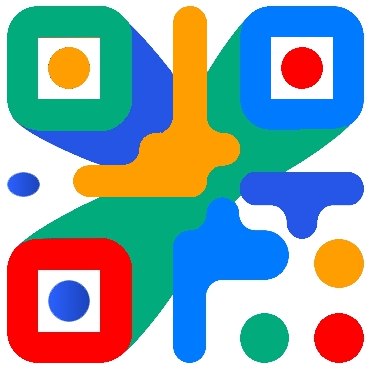A QR code is a simple, elegant piece of technology. It is also resurgent. QR code statistics suggest a bright future for these small beauties.
QR codes are optical labels that contain information that can be read by machines. They are barcodes. The difference is that they are two-dimensional. Find out how QR codes work in our FAQ. Read the post for more information.
The purpose of this post is to introduce you to their basics. This includes:
What Is a QR Code? QR Code Meaning
Especially industries that used to rely on a lot of foot traffic stand to benefit from QR codes. It is convenient and hygienic. QR codes are poised to be a powerful tool for bars and restaurants in particular.
- What a QR code is
- What QR code stands for
- The QR code types
By scanning a narrow beam of light, a one-dimensional barcode can be scanned. This is done by means of a specialized scanner. One-dimensional barcodes have vertical bars in which information is encoded. More specifically, their width and their distance from one another. One-dimensional barcodes go in just one dimension, horizontally. This is why they're called one-dimensional barcodes.
To QR codes. there are two dimensions: horizontally and vertically. QR codes consist of patterns of squares made up of smaller squares. This arrangement of small squares encodes information in a QR code. Like other barcodes, it delivers information once scanned.
In addition to encoding and providing information on two axes (up-and-down and side-to-side), QR codes also provide numerous benefits. Among the most influential factors, speed is one of the most important. QR codes were developed in 1994 mainly to increase scanning speed. Find out more about QR codes and barcodes in our post on QR codes vs. barcodes.
What Does QR Stand for?
QR stands for "quick response." QR codes can generate information faster than standard barcodes because they are "quick response codes."
Benefits of QR Codes
The speed of the information is due to the fact that it is encoded and accessed simultaneously in two dimensions. A greater amount of information is transmitted more quickly. QR codes are particularly useful because of their speed. But they are not the only option.
Their reliability is better. It is still possible to sustain damage with QR code error correction.
Additionally, they are much more accessible than standard barcodes. Two-dimensional QR codes can be scanned with most digital image sensors. Most major phone manufacturers have turned cell phone cameras into QR code scanners, so it's not difficult. Smartphones can now read QR codes with their cameras.
In short, restauranteurs can skip the hassle of building menu apps and pestering customers to download them. Customers can simply scan the QR code menus with their phones. Scanners have become more democratic.
In addition, they are inexpensive, maintainable, and easy to use.
QR Codes can be two types
QR codes can be static or dynamic. The difference lies in the method of storing information within them.
What Is a Static QR Code?
Unlike a dynamic QR code, a static QR code is not editable. A static QR code becomes larger and more complex as you store more information. The scanning of a static QR code may take a little longer when it contains large sets of characters or complicated sets of numbers.
Although QR code size and speed are not the biggest drawbacks of static QR codes. Editability is. Creating a static QR code can't be edited once you learn how to create the code. If you create a brand new QR code, you can change the information in the code.
The best use for them is for simple data and single-use situations. These may include ID numbers, serial numbers for products or events, or check-in information for hotels.
What Is a Dynamic QR Code?
QR codes that are dynamic can be edited after creation. You can edit them as often as you like. Therefore, dynamic QR codes allow you to change the information without reprinting new codes.
To accomplish this, they change a short URL to a QR code. Scanners take users to a URL where they see information about the products. These codes tend to scan and load the quickest since their data modules include only a single URL. These codes are also ideal for tracking QR code usage.
You should use dynamic QR codes for most applications. You can create them as easily as static QR codes, and they're more versatile. Certainly, QR codes that need updating information (such as coupons that are constantly being updated or digital menus that need to be tracked) must be dynamic. QR codes that are small and need to be scanned quickly, such as QR codes with nutrition information, should be dynamic.




